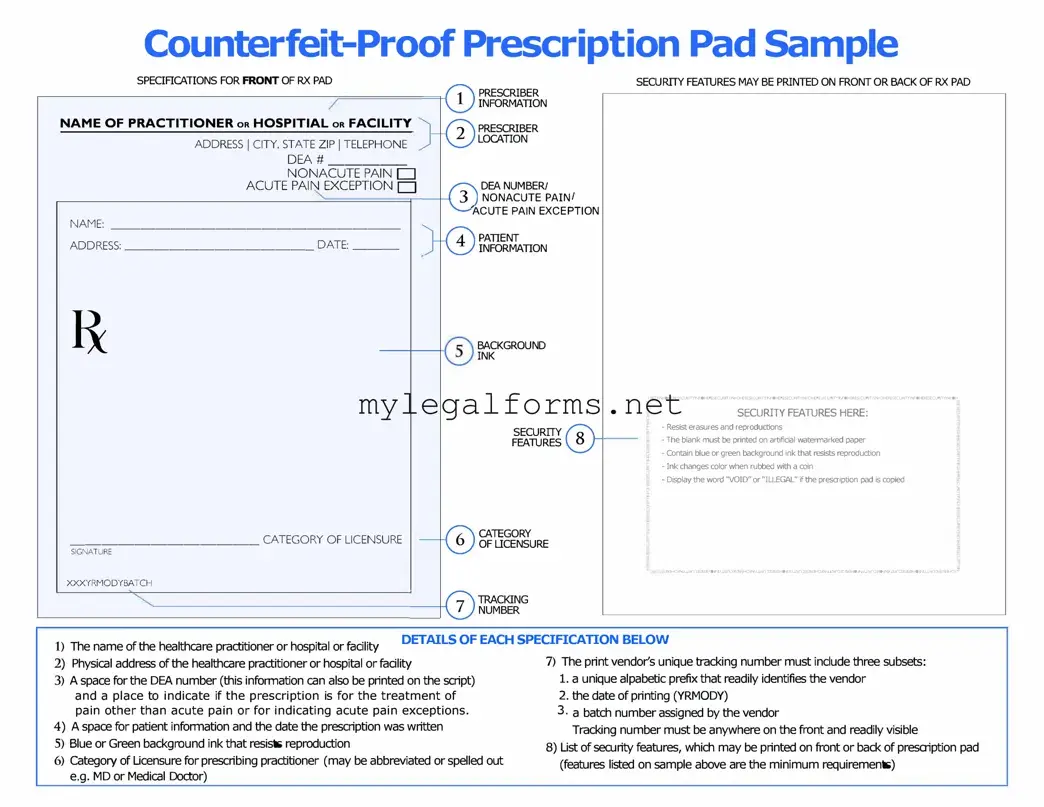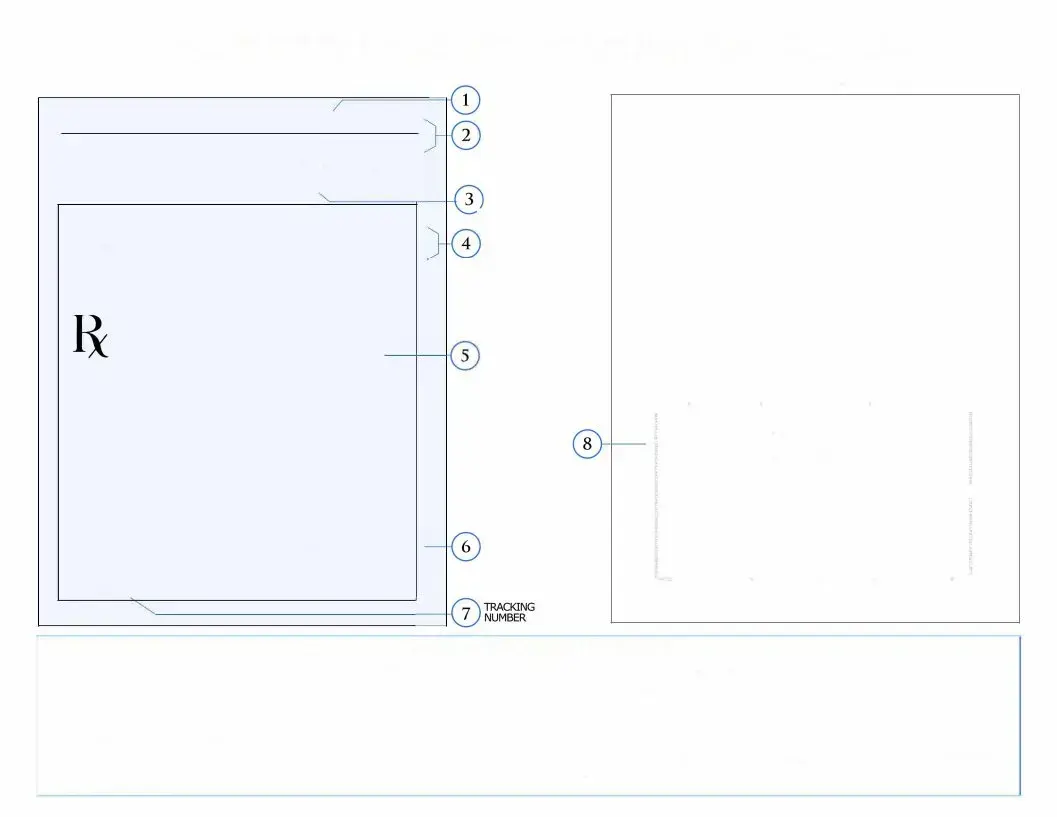The Prescription Pad form plays a crucial role in the healthcare system, serving as a bridge between healthcare providers and patients. This essential document not only facilitates the accurate dispensing of medications but also ensures that patients receive the correct treatment tailored to their specific needs. Typically, the form includes vital information such as the patient's name, date of birth, and the prescribing physician's details, which are critical for identifying both parties involved in the transaction. Additionally, it outlines the prescribed medication, dosage instructions, and any necessary refills, providing clear guidance to pharmacists. By standardizing the prescription process, this form helps to minimize errors and enhance patient safety. Furthermore, it often incorporates fields for special instructions or warnings, allowing healthcare providers to communicate important information regarding potential side effects or interactions with other medications. Understanding the significance of the Prescription Pad form is essential for both medical professionals and patients alike, as it underpins the effective management of health and wellness in a structured manner.

